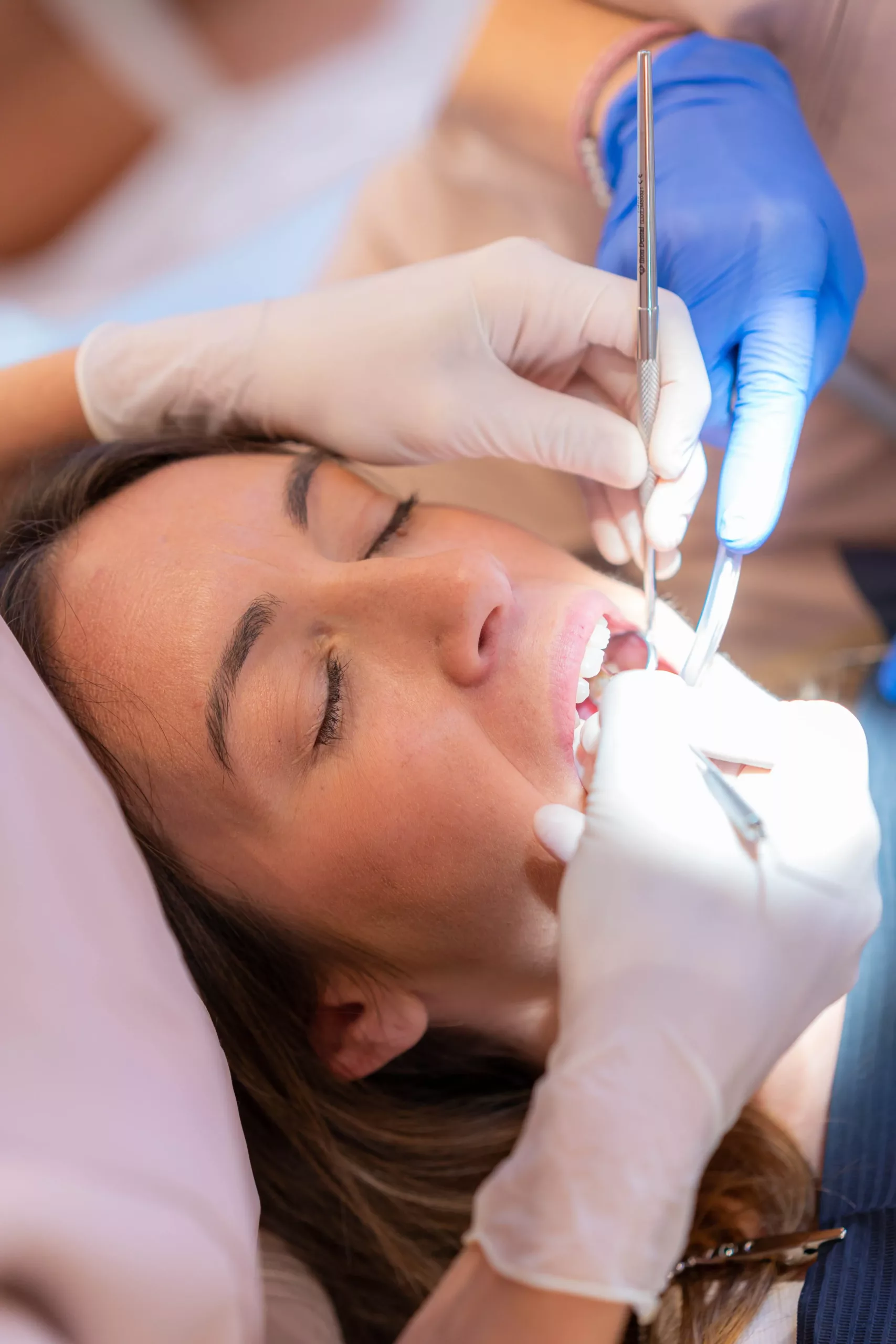

What is periodontal disease?
Periodontal disease is an infection that affects your gums and the bone structures that support your teeth. Researchers have discovered that several types of bacteria found in dental plaque can cause the infection. Dental plaque is a sticky film that can accumulate on your teeth without proper brushing and flossing. An accrual of plaque can negatively impact your gums and bone. Characteristics of periodontal disease include red, swollen, and bleeding gums. However, periodontal disease is usually painless in its nascent stages. Therefore, many people have the disease without knowing it. If untreated, it can destroy your connective tissue and jaw bone and ultimately cause tooth loss. Research has also suggested there may be links between periodontal disease and other ailments including heart disease, strokes, and diabetes. Belmont Dental Group can diagnose periodontal disease and partner with you to devise a treatment plan that will control the infection.
Causes of periodontal disease
Your mouth is continually teeming with bacteria. These bacteria combine with mucus and other particles to form a colorless plaque that adheres to your teeth. The plaque begins to build up on your teeth and ultimately harden to become tartar. Your immune system’s reaction to the bacteria can deteriorate your gums, alveolar bone, and periodontal ligament. You can help minimize your risk for periodontal disease by maintaining good oral hygiene, not smoking, and eating a balanced diet.




Signs and symptoms of periodontal disease:
The earliest stage of periodontal disease is gingivitis, which can cause red, swollen, or bleeding gums. Though gingivitis can be reversed, it can also progress into periodontitis if it is not treated. Signs and symptoms of increasingly severe periodontal disease include:
What is periodontal (gum) disease?
The term “periodontal” means “around the tooth.” Periodontal disease (also known as periodontitis and gum disease) is a common inflammatory condition which affects the supporting and surrounding soft tissues of the tooth; also the jawbone itself when in its most advanced stages.
Periodontal disease is most often preceded by gingivitis which is a bacterial infection of the gum tissue. A bacterial infection affects the gums when the toxins contained in plaque begin to irritate and inflame the gum tissues. Once this bacterial infection colonizes in the gum pockets between the teeth, it becomes much more difficult to remove and treat. Periodontal disease is a progressive condition that eventually leads to the destruction of the connective tissue and jawbone. If left untreated, it can lead to shifting teeth, loose teeth and eventually tooth loss. Periodontal disease is the leading cause of tooth loss among adults in the developed world and should always be promptly treated.


Without treatment, gingivitis can spread below your gum line. The resulting irritation can cause your body to attack itself. There may be no symptoms while periodontal disease causes your teeth to separate from the gum tissue. Increasingly deep pockets between your teeth and gums typically indicate that periodontal disease is destroying your soft tissue and bone. The most common forms of periodontal disease include:
Periodontal disease treatment
Your Belmont Dental Group professional may choose to employ one of many surgical or non-surgical treatments for periodontal disease. A decision regarding which is best for you will depend on the condition of your teeth, gums, and bone. You will undergo a complete periodontal exam before receiving any treatments or recommendations. Among the common periodontal disease treatment options are:






